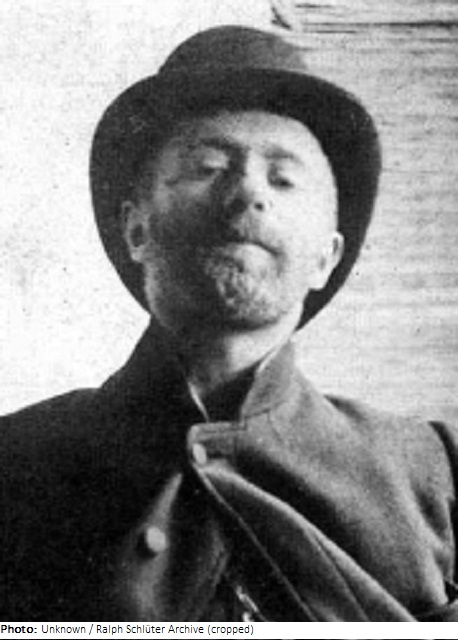
| Roles | Competed in Olympic Games |
|---|---|
| Sex | Male |
| Full name | Isaac Lazarus•Israëls |
| Used name | Isaac•Israëls |
| Born | 3 February 1865 in Amsterdam, Noord-Holland (NED) |
| Died | 7 October 1934 (aged 69 years 8 months 4 days) in Den Haag (The Hague), Zuid-Holland (NED) |
| NOC |  Netherlands Netherlands |
| Medals | OG |
| Gold | 1 |
| Silver | 0 |
| Bronze | 0 |
| Total | 1 |
While he is less known than his father Jozef (1824-1911), Isaac Israëls earned his fame as an impressionist painter. A Dutchman of Jewish descent, he initially followed in his father’s footsteps in his studio and at the art academy in The Hague, but then moved to Amsterdam in 1885. Together with his friend George Breitner, he became the best known member of the “Amsterdam Impressionists”. After extensive stays in Paris and London between 1903 and 1915 and a year in the Dutch Indies in 1921, he ultimately settled in Amsterdam. He was often compared to Édouard Manet and worked just as often with the German Max Liebermann. One of his famous pictures is Mata Hari, one of many portraits of pretty young women. Israëls died in 1934 after having been hit by a car.
According to the Rijksbureau voor Kunsthistorische Documentatie (RKD), Israëls’ winning entry in the 1928 Olympic competition paintings, The Red Rider, is a depiction of engineer Jacobus Pieter Leeuwenburgh (1879-1962) on his horse Tristan. Leeuwenburgh rejected the portrait because he did not like the horse. Subsequently, Israëls entered it in the Olympic competition and changed the title from Rider in a Red Coat to The Red Rider. The painting also received a consistently negative review in the Dutch contemporary press. According to the Dutch catalog, there were two paintings with the title Cavalier Rouge. One was owned by a Mr. Glerum from Amsterdam, and the other one by the art dealer Scherjon from Utrecht. The latter is the painting that was awarded the gold medal, created in oil on canvas in the format 80 x 75 cm between 1920 and 1928. The second Red Rider is unknown. Meeting at the hunt is another equestrian motif, created in 1928 in oil on canvas (101 × 81 cm), now in the Rijksmuseum Twenthe, Enschede. Other titles of the same work include Riders and Horses and the comprehensive Meeting at the Hunt, Courtyard of Zeist Castle, with M.M. Kwint on ‘Puiu’, Hussar Officer J. G. Star Busmann, and Fred Lodder, owner of a riding stable in Zeist, on ‚Jozephine’.
He participated in two more Olympic Games, 1924 at Paris and 1932 at Los Angeles. The 1924 paintings consistently show scenes of boxers, at least two of which depict a black boxer who may have been the then popular “Battling Siki”. Best known is the painting showing him in the corner of the ring during a break in the fight. It was painted in 1914/15 (oil on canvas, 101.5 x 76.5 cm) and belongs to the collection of the Centraal Museum in Utrecht. There are several versions in oil and watercolor of the boxer leaning against the ring ropes (e.g. oil on canvas, 75 x 63 cm). There are also charcoal drawings as preliminary studies. All of them were probably made in this period, but beyond that they cannot be assigned.
Of the works submitted in 1932, Boxing Lessons is identified, showing two boys before training. The painting (oil on canvas, 60.5 x 50.5 cm) sold at Christie’s in 2013 for just under €50,000. In the contemporary newspaper Sport in Beeld, the other two paintings are described rather disparagingly, “The one canvas shows a boxing ring…. with no boxers. We see a bunch of spectators sitting behind the ring. Make a few slats from the ropes of the ring, and we see farmers, citizens and country people at a livestock show, looking at a pen with beautiful piglets. Black and White is the name of the other canvas: something like a Negro with something like a white man in arm wrestling. A pair of weird red snakes must be boxers’ legs in red tights. I guess this is about color contrast and ‘impression’… For me, however, the main thing is that you get the impression that two savages are attacking each other, but not, that they are boxing.” The description of this “boxing match” is met by the painting Two Boxers (oil on canvas, 152 x 101 cm), which, however, like most of his paintings of boxers, was created as early as 1914/15. It is possible that this work was submitted as early as 1924, and possibly again in 1932.
| Games | Discipline (Sport) / Event | NOC / Team | Pos | Medal | As | |
|---|---|---|---|---|---|---|
| 1924 Summer Olympics | Art Competitions |  NED NED |
Isaac Israëls | |||
| Painting, Open (Olympic) | ||||||
| Painting, Open (Olympic) | ||||||
| Painting, Open (Olympic) | ||||||
| Painting, Open (Olympic) | ||||||
| 1928 Summer Olympics | Art Competitions |  NED NED |
Isaac Israëls | |||
| Painting, Paintings, Open (Olympic) | 1 | Gold | ||||
| Painting, Paintings, Open (Olympic) | ||||||
| Painting, Paintings, Open (Olympic) | ||||||
| 1932 Summer Olympics | Art Competitions |  NED NED |
Isaac Israëls | |||
| Painting, Paintings, Open (Olympic) | ||||||
| Painting, Paintings, Open (Olympic) | ||||||
| Painting, Paintings, Open (Olympic) |